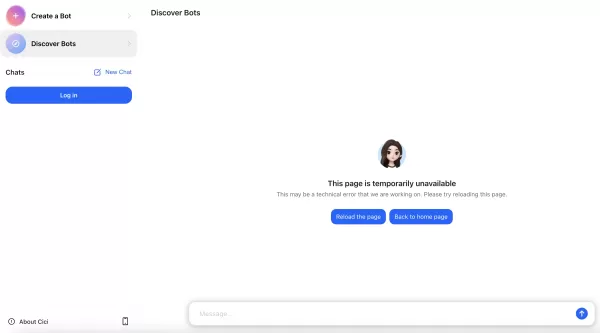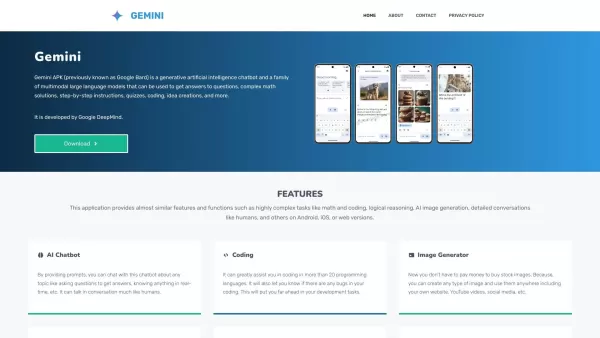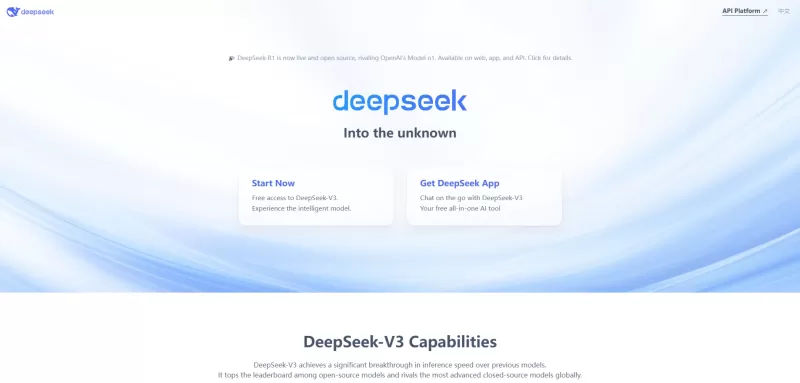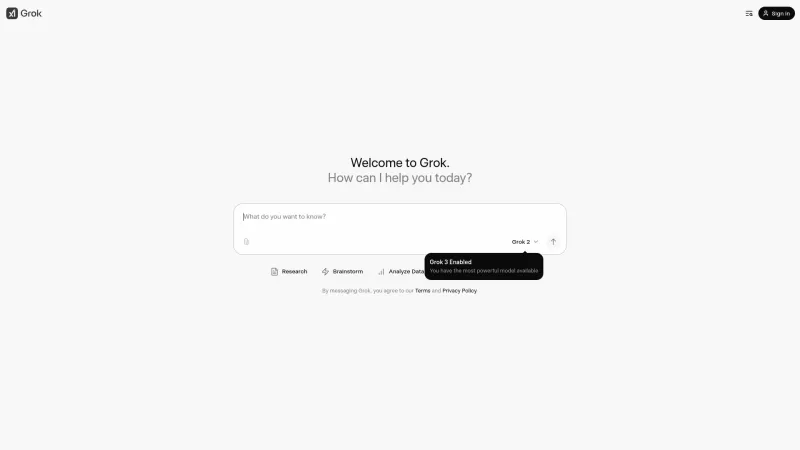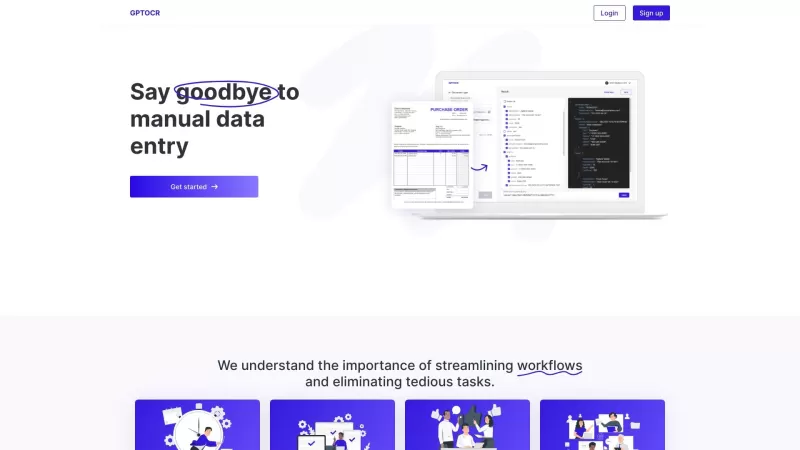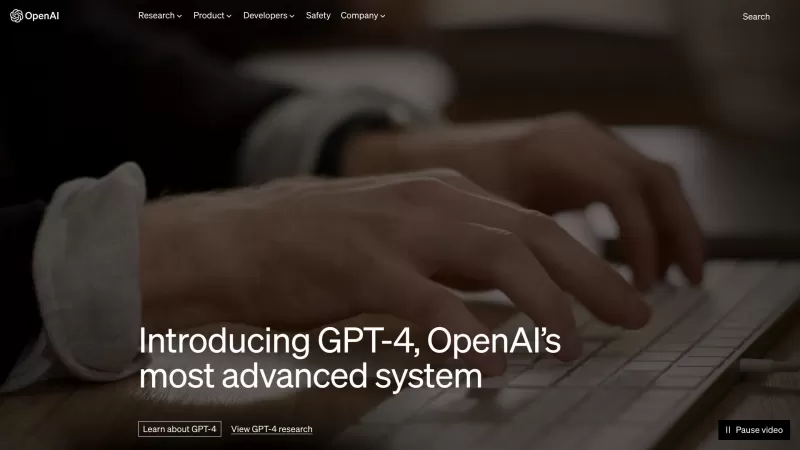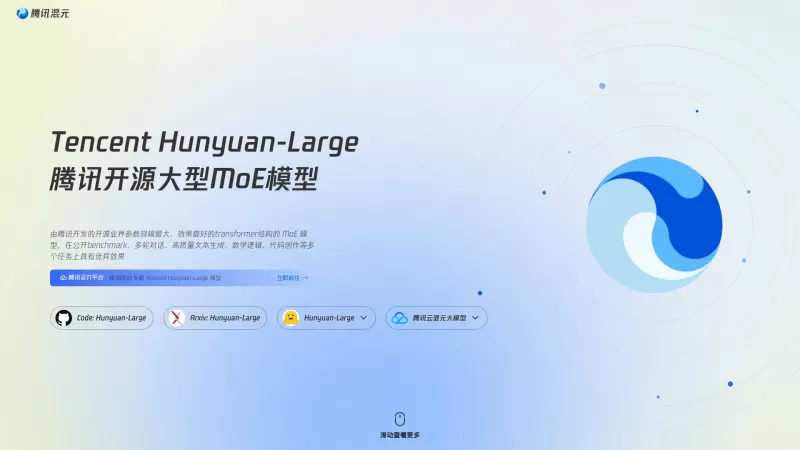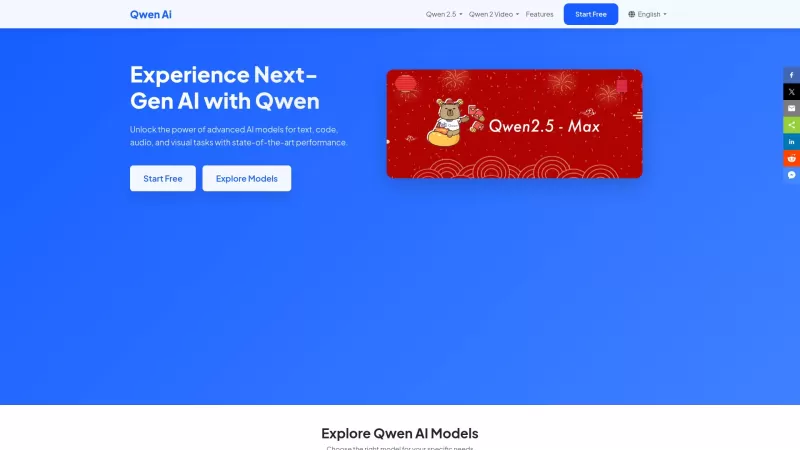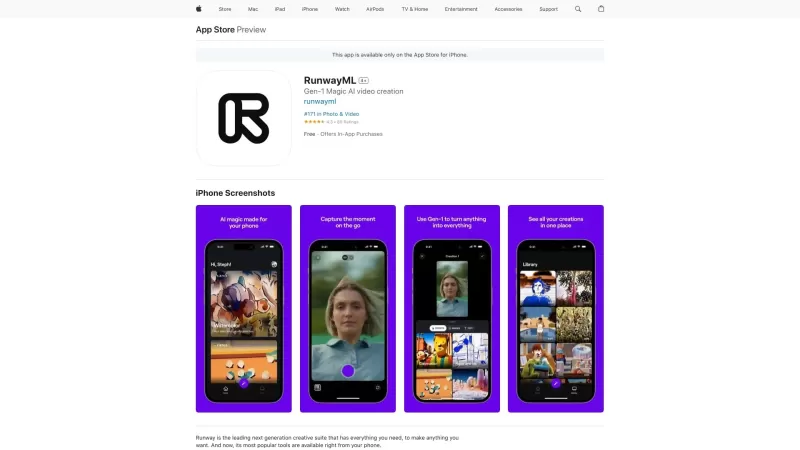Streamline Customer Support with AI Agents for Gmail and Slack
In today’s dynamic business landscape, delivering swift and effective customer support is vital for success. AI agents provide an efficient way to automate customer interactions, allowing human agents to tackle intricate issues. This guide outlines how to create AI agents that integrate seamlessly with Gmail and Slack using the Relevance AI platform, transforming customer service with responsive, AI-driven solutions.
Key Points
Developing an AI agent to manage customer support inquiries.
Connecting the AI agent with Gmail and Slack for smooth communication.
Utilizing a knowledge base to deliver precise responses to customer queries.
Redirecting complex or unresolved queries to human agents for tailored assistance.
Harnessing Relevance AI’s features, including triggers and tool builder, to efficiently create and manage AI agents.
Implementing feedback forms to enhance customer service quality.
Understanding AI Agents for Customer Support
What are we building?
The goal is to develop an AI agent that autonomously handles customer inquiries through Gmail and Slack.

This advanced AI agent instantly addresses simple, repetitive queries. The process involves designing a robust system with a clear workflow. Using a tool like Miro, we map the customer service experience, with the agent’s workflow including:
- Receiving customer inquiries via Gmail.
- Accessing an updated knowledge base.
- Responding to answerable queries.
- Escalating complex or unanswered queries to human agents via Slack.
- Incorporating a feedback system to maintain service quality.
The aim is to build an efficient, seamless customer support system using Relevance AI, leveraging AI’s speed and consistency.
Defining the Agent’s Workflow with Miro
Before using the Relevance AI platform, mapping the process with a tool like Miro is critical to establish a clear workflow for the AI agent.
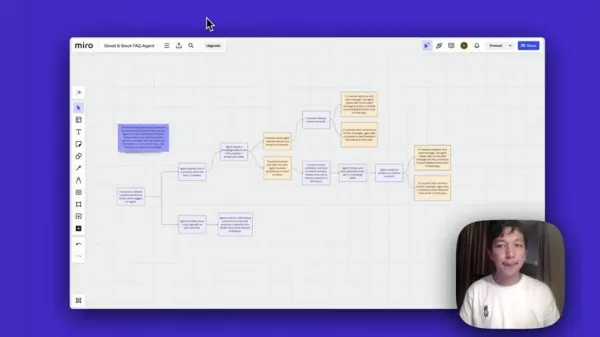
The Miro workflow should:
- Begin when customers initiate conversations via Gmail.
- Enable the agent to identify queries about the app or company.
- Allow the agent to check the knowledge base for relevant question-answer pairs.
- Prompt the agent to request additional details if the query is unclear.
- Provide quick responses when a matching answer is found.
- Escalate unanswered or complex queries to human agents.
- Offer a feedback mechanism for customers.
Understanding these steps ensures AI agents are designed to meet user needs, delivering a positive support experience.
Key Concepts in Relevance AI for Building AI Agents
Before building with Relevance AI, it’s essential to grasp key concepts and tools.
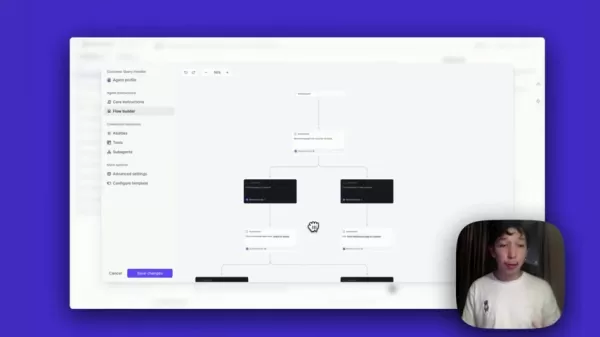
Key elements include:
- Providing agent access to knowledge: Equip the AI agent with information to respond effectively to queries.
- Updating the knowledge base: Regularly refresh the agent’s knowledge for accurate responses.
- Using triggers: Set triggers to activate the AI agent at the right moments.
- Employing email tools: Use Relevance AI tools to enable seamless email communication.
- Agent prompting: Craft effective prompts to improve response quality.
- Keeping humans in the loop: Ensure human agents handle complex queries the AI cannot resolve.
Agent Profile: Configuring Triggers
In Relevance AI, the first step is setting up triggers to enable the agent to respond to customer inquiries.
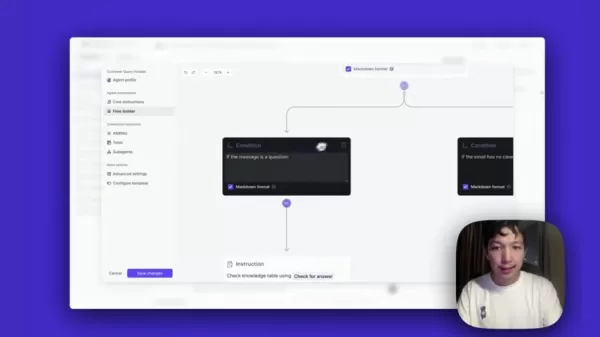
Triggers are typically linked to a specific email account receiving customer support messages. Proper trigger configuration ensures the agent activates when new messages arrive, enabling timely responses.
Prompt Engineering and Core Instructions for AI Agent Excellence
Prompt engineering involves crafting precise prompts to guide the AI agent effectively.
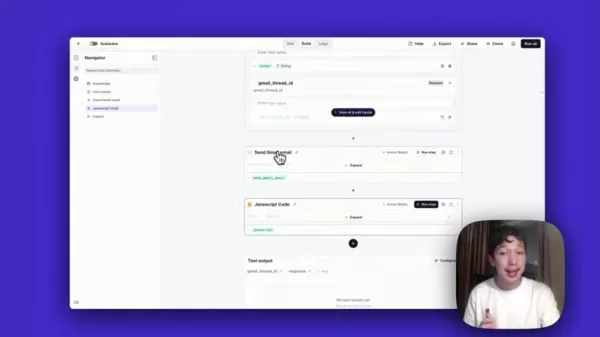
To optimize prompt engineering for your AI customer service agent:
- Assign the agent a specific role.
- Provide standard operating procedures (SOPs).
- Validate responses for accuracy.
Experimenting and refining prompts enhances the agent’s response quality across different models.
The Flow Builder: Orchestrating AI Agent Actions for Enhanced Customer Support
The Flow Builder provides a reliable framework for prompt engineering, guiding the agent from customer contact to issue resolution. It enables agents to:
- Make informed decisions.
- Execute specific actions.
- Create logical decision trees that emulate human approaches.
This ensures AI agents deliver human-like interactions with a natural tone.
Leveraging Tools for AI Agents
Using tools within Relevance AI enhances the AI agent’s capabilities. Common tools include:
- Sending responses to customers.
- Requesting clarification from customers.
- Delivering end-state messages.
- Sending feedback forms to customers.
These tools enable the AI agent to manage diverse customer interactions effectively.
Practical Implementation of an AI Customer Support Agent
Step-by-Step: Building a Customer Support Agent for E-commerce
For an e-commerce retailer, the AI agent should:
Set up a Gmail trigger: Detect new customer inquiries sent to the support email, initiating agent procedures.
Instruct agents: Input these parameters into the Prompt section:
- Role: You are a courteous and approachable customer service representative.
- Task: Respond to customer inquiries and messages.
- Standard Operating Procedure:
- Receive customer messages.
- Identify end-state messages (e.g., “thank you”).
- Search the knowledge base for relevant answers.
- Respond appropriately if a match is found.
- Escalate to a manager if needed.
Configure abilities: Enable scheduling messages and escalating to human agents for complex queries.
Set agent tools: Options include sending end-state messages, feedback forms, adding human answers to the knowledge base, and checking for answers.
Design the flow: Use the Flow Builder in Relevance AI to create a workflow handling all scenarios, including custom steps like:
- Sending follow-up or clarification questions for unclear inquiries.
- Verifying if a solution is found.
- Resolving issues or escalating to support specialists.
How to Set Up a Trigger in Relevance AI
Setting up the Trigger
To create an automated AI agent, define the agent profile by accessing Triggers in Relevance AI, connecting to platforms, webhooks, or APIs. Steps include:
- Create a shareable app in Google Gmail, possibly using an admin account.
- Grant Relevance AI access to your email.
- Save changes to activate the trigger.
New customer emails now trigger an agent response in Relevance AI.
Understanding Relevance AI Pricing
Key Features
Designing effective AI agent workflows involves leveraging tools like:
- Enabling key tools.
- Setting specific parameters.
Relevance AI supports Large Language Models (LLMs) with varying costs based on usage and capabilities.
Pros and Cons of Using AI Agents for Customer Support
Pros
Round-the-clock availability.
Faster response times.
Scalability for high volumes.
Enhanced customer satisfaction.
Cost efficiency.
Cons
Challenges with complex queries.
Reliance on accurate data and training.
Risk of technical issues.
Limited emotional intelligence.
Essential Features
Highlight Core Instructions and Flow Builder
Core instructions and the Flow Builder offer tools to optimize agents. Ensure detailed agent descriptions and accurate knowledge settings. Test for:
- Accuracy: Are responses relevant and correct?
- Safety: Are answers non-toxic and safe?
- Speed: How quickly does the agent respond?
- Completeness: Can the agent handle most tasks independently?
- Cost efficiency: Can operations be optimized?
Effective Use Cases for AI Customer Support Agents
Practical Applications
AI agents create scalable, efficient systems. Use cases include:
- Providing 24/7 automated responses.
- Ensuring consistent, friendly interactions.
- Saving time for support specialists to focus on complex queries.
Frequently Asked Questions
Can the AI agent handle diverse customer inquiries?
Yes, with a robust knowledge base and advanced natural language processing, the AI agent delivers accurate responses to varied queries.
How does the AI agent manage complex or technical questions?
For unanswerable queries, the AI escalates to human agents, ensuring seamless and reliable service.
Can other communication channels be connected besides Gmail and Slack?
Yes, webhooks and APIs enable integration with most channels. Contact our team for details.
Is training agents difficult?
No, the user-friendly workflow interface simplifies the process.
How can the agent be used beyond Gmail and Slack?
Extensive API interfaces support broader applications.
Related Questions
How to improve prompt engineering in Relevance AI?
Define the LLM’s role and task, providing detailed instructions for comprehensive responses.
Is LLM prompting simple?
No, prompt engineering is complex with many edge cases. Use tools to guide the process.
Can the bot scale to thousands of users?
Yes, it’s designed for scalability.
Related article
 AI Newsletter Automation Guide: Effortlessly Streamline Your Workflow
Newsletter Automation: The Smart Way to Engage Your AudienceNewsletters remain one of the most effective tools for audience engagement, brand promotion, and value delivery. While traditionally labor-intensive, modern automation solutions now allow co
AI Newsletter Automation Guide: Effortlessly Streamline Your Workflow
Newsletter Automation: The Smart Way to Engage Your AudienceNewsletters remain one of the most effective tools for audience engagement, brand promotion, and value delivery. While traditionally labor-intensive, modern automation solutions now allow co
 AI-Powered Blog Automation: Boost Efficiency with Journalist AI
In the fast-moving digital landscape, automating your blog with AI is essential. Picture a blog that creates and posts articles on its own, keeping readers hooked without constant manual work. Autoblo
AI-Powered Blog Automation: Boost Efficiency with Journalist AI
In the fast-moving digital landscape, automating your blog with AI is essential. Picture a blog that creates and posts articles on its own, keeping readers hooked without constant manual work. Autoblo
 AI Voice Agents Revolutionize Cold Calling with Retell AI & n8n Automation
The Future of Cold Calling: Building AI Voice Agents with Retell AI and n8nCold calling has always been one of the most challenging yet essential aspects of sales and marketing. But let's be honest - it's exhausting, time-consuming, and often ineffective when done manually. What if I told you there'
Comments (3)
0/200
AI Voice Agents Revolutionize Cold Calling with Retell AI & n8n Automation
The Future of Cold Calling: Building AI Voice Agents with Retell AI and n8nCold calling has always been one of the most challenging yet essential aspects of sales and marketing. But let's be honest - it's exhausting, time-consuming, and often ineffective when done manually. What if I told you there'
Comments (3)
0/200
![JasonSanchez]() JasonSanchez
JasonSanchez
 August 19, 2025 at 5:01:19 AM EDT
August 19, 2025 at 5:01:19 AM EDT
This AI agent stuff for Gmail and Slack sounds like a game-changer! I’m curious how much time it really saves—has anyone tried it in a super busy support team? 🤔


 0
0
![KevinGarcia]() KevinGarcia
KevinGarcia
 August 8, 2025 at 11:00:59 PM EDT
August 8, 2025 at 11:00:59 PM EDT
This AI agent stuff for Gmail and Slack sounds like a game-changer! Imagine slashing response times and letting humans focus on the tough cases. But, gotta wonder, will these bots ever get too smart and start roasting customers instead of helping them? 😅


 0
0
![AlbertLee]() AlbertLee
AlbertLee
 July 27, 2025 at 9:18:39 PM EDT
July 27, 2025 at 9:18:39 PM EDT
Super cool to see AI agents handling Gmail and Slack support! 🚀 Saves so much time, but I wonder if they’ll ever sound as human as my coworker’s witty replies.


 0
0
In today’s dynamic business landscape, delivering swift and effective customer support is vital for success. AI agents provide an efficient way to automate customer interactions, allowing human agents to tackle intricate issues. This guide outlines how to create AI agents that integrate seamlessly with Gmail and Slack using the Relevance AI platform, transforming customer service with responsive, AI-driven solutions.
Key Points
Developing an AI agent to manage customer support inquiries.
Connecting the AI agent with Gmail and Slack for smooth communication.
Utilizing a knowledge base to deliver precise responses to customer queries.
Redirecting complex or unresolved queries to human agents for tailored assistance.
Harnessing Relevance AI’s features, including triggers and tool builder, to efficiently create and manage AI agents.
Implementing feedback forms to enhance customer service quality.
Understanding AI Agents for Customer Support
What are we building?
The goal is to develop an AI agent that autonomously handles customer inquiries through Gmail and Slack.

This advanced AI agent instantly addresses simple, repetitive queries. The process involves designing a robust system with a clear workflow. Using a tool like Miro, we map the customer service experience, with the agent’s workflow including:
- Receiving customer inquiries via Gmail.
- Accessing an updated knowledge base.
- Responding to answerable queries.
- Escalating complex or unanswered queries to human agents via Slack.
- Incorporating a feedback system to maintain service quality.
The aim is to build an efficient, seamless customer support system using Relevance AI, leveraging AI’s speed and consistency.
Defining the Agent’s Workflow with Miro
Before using the Relevance AI platform, mapping the process with a tool like Miro is critical to establish a clear workflow for the AI agent.

The Miro workflow should:
- Begin when customers initiate conversations via Gmail.
- Enable the agent to identify queries about the app or company.
- Allow the agent to check the knowledge base for relevant question-answer pairs.
- Prompt the agent to request additional details if the query is unclear.
- Provide quick responses when a matching answer is found.
- Escalate unanswered or complex queries to human agents.
- Offer a feedback mechanism for customers.
Understanding these steps ensures AI agents are designed to meet user needs, delivering a positive support experience.
Key Concepts in Relevance AI for Building AI Agents
Before building with Relevance AI, it’s essential to grasp key concepts and tools.

Key elements include:
- Providing agent access to knowledge: Equip the AI agent with information to respond effectively to queries.
- Updating the knowledge base: Regularly refresh the agent’s knowledge for accurate responses.
- Using triggers: Set triggers to activate the AI agent at the right moments.
- Employing email tools: Use Relevance AI tools to enable seamless email communication.
- Agent prompting: Craft effective prompts to improve response quality.
- Keeping humans in the loop: Ensure human agents handle complex queries the AI cannot resolve.
Agent Profile: Configuring Triggers
In Relevance AI, the first step is setting up triggers to enable the agent to respond to customer inquiries.

Triggers are typically linked to a specific email account receiving customer support messages. Proper trigger configuration ensures the agent activates when new messages arrive, enabling timely responses.
Prompt Engineering and Core Instructions for AI Agent Excellence
Prompt engineering involves crafting precise prompts to guide the AI agent effectively.

To optimize prompt engineering for your AI customer service agent:
- Assign the agent a specific role.
- Provide standard operating procedures (SOPs).
- Validate responses for accuracy.
Experimenting and refining prompts enhances the agent’s response quality across different models.
The Flow Builder: Orchestrating AI Agent Actions for Enhanced Customer Support
The Flow Builder provides a reliable framework for prompt engineering, guiding the agent from customer contact to issue resolution. It enables agents to:
- Make informed decisions.
- Execute specific actions.
- Create logical decision trees that emulate human approaches.
This ensures AI agents deliver human-like interactions with a natural tone.
Leveraging Tools for AI Agents
Using tools within Relevance AI enhances the AI agent’s capabilities. Common tools include:
- Sending responses to customers.
- Requesting clarification from customers.
- Delivering end-state messages.
- Sending feedback forms to customers.
These tools enable the AI agent to manage diverse customer interactions effectively.
Practical Implementation of an AI Customer Support Agent
Step-by-Step: Building a Customer Support Agent for E-commerce
For an e-commerce retailer, the AI agent should:
Set up a Gmail trigger: Detect new customer inquiries sent to the support email, initiating agent procedures.
Instruct agents: Input these parameters into the Prompt section:
- Role: You are a courteous and approachable customer service representative.
- Task: Respond to customer inquiries and messages.
- Standard Operating Procedure:
- Receive customer messages.
- Identify end-state messages (e.g., “thank you”).
- Search the knowledge base for relevant answers.
- Respond appropriately if a match is found.
- Escalate to a manager if needed.
Configure abilities: Enable scheduling messages and escalating to human agents for complex queries.
Set agent tools: Options include sending end-state messages, feedback forms, adding human answers to the knowledge base, and checking for answers.
Design the flow: Use the Flow Builder in Relevance AI to create a workflow handling all scenarios, including custom steps like:
- Sending follow-up or clarification questions for unclear inquiries.
- Verifying if a solution is found.
- Resolving issues or escalating to support specialists.
How to Set Up a Trigger in Relevance AI
Setting up the Trigger
To create an automated AI agent, define the agent profile by accessing Triggers in Relevance AI, connecting to platforms, webhooks, or APIs. Steps include:
- Create a shareable app in Google Gmail, possibly using an admin account.
- Grant Relevance AI access to your email.
- Save changes to activate the trigger.
New customer emails now trigger an agent response in Relevance AI.
Understanding Relevance AI Pricing
Key Features
Designing effective AI agent workflows involves leveraging tools like:
- Enabling key tools.
- Setting specific parameters.
Relevance AI supports Large Language Models (LLMs) with varying costs based on usage and capabilities.
Pros and Cons of Using AI Agents for Customer Support
Pros
Round-the-clock availability.
Faster response times.
Scalability for high volumes.
Enhanced customer satisfaction.
Cost efficiency.
Cons
Challenges with complex queries.
Reliance on accurate data and training.
Risk of technical issues.
Limited emotional intelligence.
Essential Features
Highlight Core Instructions and Flow Builder
Core instructions and the Flow Builder offer tools to optimize agents. Ensure detailed agent descriptions and accurate knowledge settings. Test for:
- Accuracy: Are responses relevant and correct?
- Safety: Are answers non-toxic and safe?
- Speed: How quickly does the agent respond?
- Completeness: Can the agent handle most tasks independently?
- Cost efficiency: Can operations be optimized?
Effective Use Cases for AI Customer Support Agents
Practical Applications
AI agents create scalable, efficient systems. Use cases include:
- Providing 24/7 automated responses.
- Ensuring consistent, friendly interactions.
- Saving time for support specialists to focus on complex queries.
Frequently Asked Questions
Can the AI agent handle diverse customer inquiries?
Yes, with a robust knowledge base and advanced natural language processing, the AI agent delivers accurate responses to varied queries.
How does the AI agent manage complex or technical questions?
For unanswerable queries, the AI escalates to human agents, ensuring seamless and reliable service.
Can other communication channels be connected besides Gmail and Slack?
Yes, webhooks and APIs enable integration with most channels. Contact our team for details.
Is training agents difficult?
No, the user-friendly workflow interface simplifies the process.
How can the agent be used beyond Gmail and Slack?
Extensive API interfaces support broader applications.
Related Questions
How to improve prompt engineering in Relevance AI?
Define the LLM’s role and task, providing detailed instructions for comprehensive responses.
Is LLM prompting simple?
No, prompt engineering is complex with many edge cases. Use tools to guide the process.
Can the bot scale to thousands of users?
Yes, it’s designed for scalability.
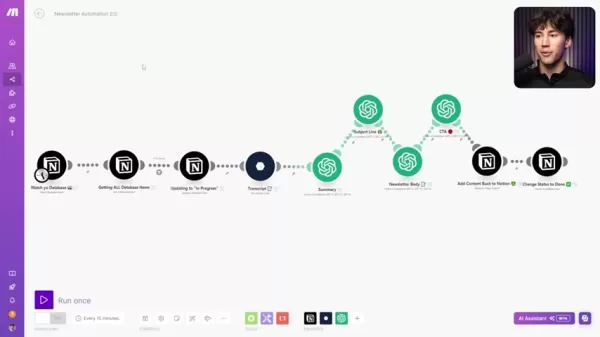 AI Newsletter Automation Guide: Effortlessly Streamline Your Workflow
Newsletter Automation: The Smart Way to Engage Your AudienceNewsletters remain one of the most effective tools for audience engagement, brand promotion, and value delivery. While traditionally labor-intensive, modern automation solutions now allow co
AI Newsletter Automation Guide: Effortlessly Streamline Your Workflow
Newsletter Automation: The Smart Way to Engage Your AudienceNewsletters remain one of the most effective tools for audience engagement, brand promotion, and value delivery. While traditionally labor-intensive, modern automation solutions now allow co
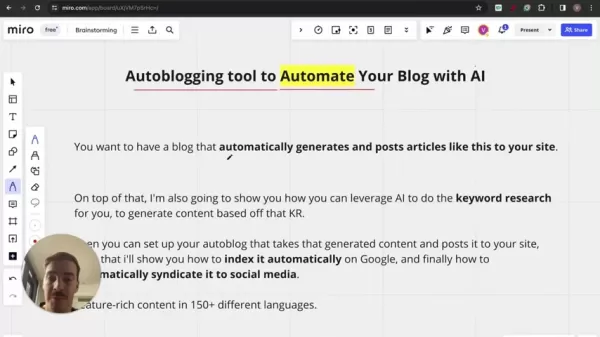 AI-Powered Blog Automation: Boost Efficiency with Journalist AI
In the fast-moving digital landscape, automating your blog with AI is essential. Picture a blog that creates and posts articles on its own, keeping readers hooked without constant manual work. Autoblo
AI-Powered Blog Automation: Boost Efficiency with Journalist AI
In the fast-moving digital landscape, automating your blog with AI is essential. Picture a blog that creates and posts articles on its own, keeping readers hooked without constant manual work. Autoblo
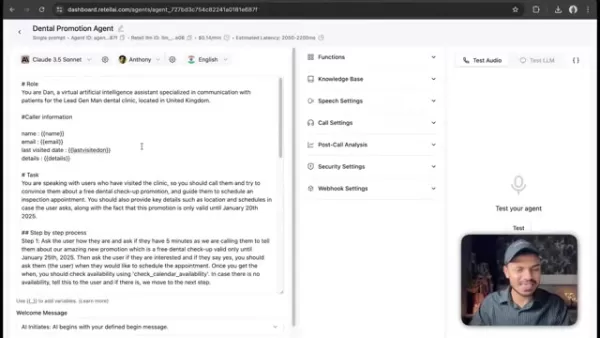 AI Voice Agents Revolutionize Cold Calling with Retell AI & n8n Automation
The Future of Cold Calling: Building AI Voice Agents with Retell AI and n8nCold calling has always been one of the most challenging yet essential aspects of sales and marketing. But let's be honest - it's exhausting, time-consuming, and often ineffective when done manually. What if I told you there'
AI Voice Agents Revolutionize Cold Calling with Retell AI & n8n Automation
The Future of Cold Calling: Building AI Voice Agents with Retell AI and n8nCold calling has always been one of the most challenging yet essential aspects of sales and marketing. But let's be honest - it's exhausting, time-consuming, and often ineffective when done manually. What if I told you there'
 August 19, 2025 at 5:01:19 AM EDT
August 19, 2025 at 5:01:19 AM EDT
This AI agent stuff for Gmail and Slack sounds like a game-changer! I’m curious how much time it really saves—has anyone tried it in a super busy support team? 🤔


 0
0
 August 8, 2025 at 11:00:59 PM EDT
August 8, 2025 at 11:00:59 PM EDT
This AI agent stuff for Gmail and Slack sounds like a game-changer! Imagine slashing response times and letting humans focus on the tough cases. But, gotta wonder, will these bots ever get too smart and start roasting customers instead of helping them? 😅


 0
0
 July 27, 2025 at 9:18:39 PM EDT
July 27, 2025 at 9:18:39 PM EDT
Super cool to see AI agents handling Gmail and Slack support! 🚀 Saves so much time, but I wonder if they’ll ever sound as human as my coworker’s witty replies.


 0
0

